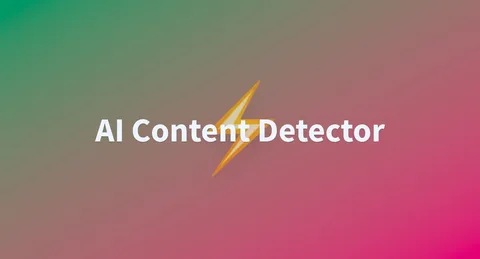Introduction
Artificial intelligence continues to grow in sophistication and usefulness, and so has the desire for dependable systems to tell human content apart from machine-generated content. One of the proposed solutions to the problem of disinformation and content creation is the ai detector.
What are AI Detectors?
An AI Detector is a computer program and system which gauges written, visual or audio content to determine if it is human-created or machine generated. Determining the AI’s involvement is a serious evaluation which must undergo rigorous scrutiny, hence, these detectors employ varying techniques. Some of these include machine learning systems and linguistic pattern scrutiny to determine the probability of artificial intelligence contribution.
What Makes AI Detectors Necessary?
Tools such as ChatGPT, Bard and other generative AI systems becoming more advanced poses a challenge of distinguishing real content from machine-generated text. There are several reasons as to why AI detectors are important:
Academic Integrity: First, to protect the pillars of learning and of ethical writing, AI detectors are being used in learning institutions to block acts of plagiarism.
Content Authenticity: Publishers and marketers utilize these systems in order to guarantee the content for articles, blogs, and social media posts is not duplicated from other sources.
Cybersecurity & Misinformation Control: AI detectors assists in the identification of fake news and malicious content like deepfakes and other AI-altered media, the “what if” of technology.
How Does an AI Detector Work?
Even though each detector is likely to employ different techniques, most detectors seem to work around the same core methodology:
-
Linguistic Pattern Recognition
AI written content has a distinct pattern of syntax and tends to be repetitive. Detectors search for odd sentence constructions, monotonous writing devoid of a distinct style, and overused phrases.
-
Perplexity and Burstiness Analysis
Many AI detectors measure “perplexity” and “burstiness.” Perplexity is how predictable the text is, while burstiness is the variation in sentence complexity. A human author is likely to create a document with more burstiness, while an AI author is more predictable.
-
Machine Learning Classifiers
More sophisticated detectors are able to identify highly sophisticated and nuanced features in text disguised as human writing and text that is AI-generated. Such detectors are trained on extensive databases of human and AI written content.
Use Cases of AI Detection Tools
Below, we outline a few industries and use cases in which ai detector are a key part of the workflow:
Education: In the detection of AI-assisted essays or other assignments.
Publishing: Screening and analyzing guest posts and submissions.
Recruitment: Verifying the authenticity of cover letters and resumes.
Legal and Compliance: Ensuring the sensitive reports or documents are original.
Marketing: Ensuring the brand voice is authentic in outsourced content.
Challenges and Issues of AI Detectors
Despite the significance of AI Detectors, they cannot work perfectly. The shortcomings of AI Detectors include:
Incorrect Identification Of The Data: Sometimes AI software pulls out human generated texts and categorizes them as AI generated content.
Difficult Circumvention Techniques: Advanced AI models can pretend to be human and write in any style to avoid detection.
Poor Performance In Other Languages: Detectors are almost exclusively efficient in English and perform poorly in other languages.
Future of AI Detectors
There will remain the challenge of adapting AI detectors as generative AI models will still remain in progress. Possible advancements include:
-
Changed, up-to-the-minute, content checks in documents and cover pages of classifying editors.
-
Detection in diverse local and universal dialects as preferred in the contemporary world.
-
Stronger detection of other forms of content such as audio, video, and other multimedia.
Picking an AI Detector
In the quest to obtain an AI detector, the following should be prioritized:
Determined Accuracy: Select the tools that are balanced in precision and recall.
Supported Languages: Dominate the language and ensure delivery of content in the preferred language.
Compliance of Privacy: Settle on the tools that are secure so content will not be tampered in any way.
User Interface: The simpler and more thoughtful the dashboard, the easier the tool will be to use.
Conclusion
Generative AI has made content faster to produce – though, not always with greater clarity. This is why AI detectors are crucial for digital practitioners who wish to build enduring trust and authenticity in the online ecosystem. Their use is a protective measure, however, with the boundaries between humans and machines getting increasingly vague, these tools are the first step in the fight to control misinformation and disinformation, albeit not flawlessly.
For The Information: Click Here




